8 Best Small RC Planes
Radio-controlled (RC) aircraft are tremendous fun at all skill levels. This guide looks at the smallest RC planes, including micro and ultra-micro options. There are 8 reviews here that are short, informative, and written in plain English. Read this quick intro if you’re new to flying RC airplanes. It explains the pros and cons of smaller models and what you need to know to make the best buying decisions.
| Budget |
|---|
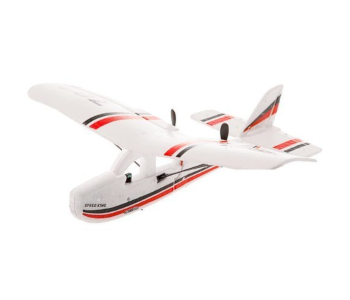 |
| Cessna 781 |
| 4.4/5.0 |
| Dimensions: 9 x 8.8 x 5.3” |
| Weight: 0.32 oz. |
| High-average flight time, 4-directional flight, fast battery charging. |
| Check Amazon |
| Best Value |
|---|
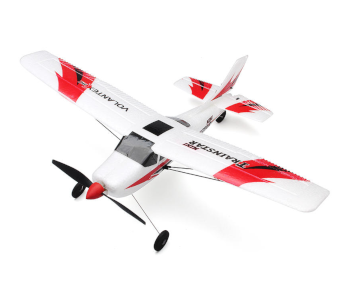 |
| Volantex V761-1 Firstar Mini |
| 4.7/5.0 |
| Dimensions: 15.7 x 12.2” |
| Weight: 0.7 oz. |
| RTF, 2.4 GHz radio system, decent range, crash-resistant EPP foam. |
| Check Banggood |
| Top Pick |
|---|
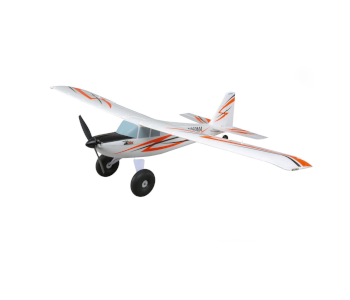 |
| E-flite UMX Timber Ultra Micro |
| 4.6/5.0 |
| Dimensions: 25.1 x 25 x 7.1” |
| Weight: 4.03 oz. |
| Beginner-friendly features, brushless motor, SAFE Select mode, LED lights. |
| Check Amazon |
Small RC Planes Vs. Small Drones
Drones have taken much of the spotlight away from RC planes in recent years, but why? They both fly, and pilots operate them using handheld controllers. Well, several unique features separate these machines that appeal to people in different ways. Most model aircraft pilots have flown drones, yet few drone enthusiasts have experience with RC planes.
The 3 shared characteristics of small electric radio-controlled planes and drones include:
- Both fly using battery power, electronics, and motors
- Both craft can take-off and land in a variety of ways
- Pilots have full control of how they function in the air
That’s pretty much where the similarity ends between the model type.
Features, Functions, and Experience
Those who fly RC planes belong to a different hobby culture. The main attraction of drones is their ease of use and filming capability. Some people like to race them, and others fly camera-less quadcopters. Even so, aerial photography and video is a drone’s biggest attraction.
So, the differences between RC planes and drones relates to the experience. Drones are much easier to fly than airplanes and RC helicopters, and thus have broader appeal. Many newer drones can make independent decisions and function with little or no pilot input. That’s not attractive to plane fans at all. RC fixed-wing plane buffs like to be in control, to feel the flight, and to hone in on their flying skills.
Benefits of Smaller RC Airplanes
There are plenty of reasons to fly smaller RC aircraft. The most notable of these are:
- Affordable and readily available
- Ready to Fly (RTF) right out of the box
- Perfect introduction for novice pilots new to planes
- Fun for skilled pilots who love to fly different types of craft
- Fly anywhere, including indoors with the smaller models
- Perform aerial acrobatics
There are a few downsides to small radio-controlled planes that new users should be aware of:
- Cannot take off or land vertically
- Have painfully short flying times (battery life)
- Few carry cameras; no FPV (first person view)
- Not stable in windy conditions
- Infrared (IR) controlled planes cannot fly outdoors in bright sunlight
Some cheaper, toy-grade RC planes use infrared (IR) controllers. Radio Frequency (RF) control is generally better. However, RF control is not always necessary if you plan to fly mostly indoors. Remember, some of the smaller RC planes are affordable beginner crafts. Their IR controllers help to keep the costs down. The reviews show all areas where a model shines and where it may fall short.
Small Plane Buying Considerations
Each review gives a list of pros, cons, and the main tech specs for the model. It’s a good idea to make a short checklist of your wants and needs. Some of your buying considerations may include:
- Set a maximum budget
- Size of the model (see review dimensions)
- IR (infrared) remote or RF (Radio Frequency)
- Flight time (battery life) on a single charge
- Recharging times
- Cost of extra batteries if swappable
- Indoor/outdoor capability
- Flight range if it’s important
Add anything to the list above that applies to you specifically. Try to have realistic expectations with the entry-level, low-budget models to avoid disappointment.
About My ‘Small RC Planes’ Guide
My RC plane reviews cover models for various categories and budgets. The sizes vary, but all craft are small for their class. My shortlist is the result of extensive research. The opinions of industry experts and real user feedback also played a role in the final selection. The first three reviews are by Best Budget, Best Value, and the Top Pick. This table shows the products as they appear on the page:
Small RC Planes Comparison Table
| Make and Model | Dimensions | Weight | Price |
|---|---|---|---|
| Cessna 781 Palm-Sized RC Beginner Plane | 9 x 8.8 x 5.3” | 0.32 oz. | Check Price |
| Volantex V761-1 Firstar Mini RC Airplane | 15.7 x 12.2” | 0.7 oz. | Check Price |
| E-flite UMX Timber Ultra Micro RC Airplane | 25.1 x 25 x 7.1” | 4.03 oz. | Check Price |
| Z50 Gyro RTF RC Glider EPP Micro Airplane | 13.7 x 11.5 x 5.23” | 1.09 oz. | Check Price |
| VOLANTEXRC RC Airplane Traninstar Micro | 7.9 x 77.3” | 0.35 oz. | Check Price |
| POCO DIVO Mini Trainstar BeginnerRC Glider | 15.7 x 12.2 x 4.1” | 1.0 oz. | Check Price |
| Top Race Small RC Trainer Airplane | 15.7 x 12.2 x 4.1” | 1.0 oz. | Check Price |
| TobyRich Small App-Control SmartPlane Pro | 13 x 11.8 x 4.6” | 1.02 oz. | Check Price |
1. Cessna 781 Small RC Beginner Plane | Best Budget
Editor’s Rating: 4.4/5
The Best Budget pick goes to the Cessna 781 Palm-Sized Micro. It’s a small ready-to-fly (RTF) RC plane that’s ideal for beginners. The model is stable and easy to fly even for younger children.
- Best feature 1: Stable, easy to fly for beginners
- Best feature 2: Crash-resistant build
- Plus points: High-average flight time, 4-directional flight, fast battery charging
- Minus points: Not suitable for outdoors
Cessna 781 Beginner Plane Highlights
Consider the Cessna 781 Micro RC if you want a lightweight indoor trainer plane. One of the best features is that it withstands those inevitable beginner crashes. The carbon framework and durable EPP material give the model a rubbery feel. That’s a good thing as the plane gently bounces off everything it hits. Not all indoor aircraft can boast the same crash-resistance.
The Cessna 781 provides 4 directional flight, i.e., ascending, descending, left, and right turns. It has a high-average flight time of 15 minutes. That may sound short to newbies, but it’s impressive compared to a lot of model planes in its class. The fast 25 minute charging via the transmitter (controller) is even more impressive. The range is 30 ft. (10 M) which is more than enough for indoor fun.
The Not So Good
It’s possible to fly this micro-sized plane outdoors but only on windless, overcast days. It’s too light to control even in a gentle breeze. Also, bright sunlight can interfere with the infrared (IR) transmitter signal. For these reasons its best used mostly as an indoor RC airplane.
| Tech Specs |
|---|
| RC Plane Type: IR RTF Cessna 781 |
| Dimensions: 9 x 8.8 x 5.3” |
| Product Weight: 0.32 oz. |
| Material: EPP/carbon |
| Launch method(s): Hand |
| Model’s Range: 30 ft. (10 meters) |
| Battery Type: 3.7V Li-poly |
| Charging Time: 25 minutes |
| Maximum Flying Time: 15 minutes |
| The Pros |
|---|
| Stable, easy to fly RC plane |
| Crash-resistant EPP material |
| High-average flight time |
| Fast charging time |
| 4-directional flight |
| The Cons |
|---|
| Not suitable for outdoors (IR controller, ultra-lightweight) |
2. Volantex V761-1 Firstar Mini RC Airplane | Best Value
Editor’s Rating: 4.7/5
Our Best Value small RC plane is the Volantex V761-1 Firstar Mini, a ready-to-fly RTF model. That means it arrives fully-assembled and ready to use right out of the box.
- Best feature 1: Easy to fly at the beginner level
- Best feature 2: Long flight time
- Plus points: RTF, 2.4 GHz radio system, fast charging, decent range, crash-resistant EPP foam
- Minus points: Only 3 channels
Volantex V761-1 Firstar Mini Highlights
The Volantex V761-1 Firstar Mini is an easy to operate, ultra-lightweight RC airplane. It comes ready-to-fly (RTF) and includes a 2.4Ghz radio-frequency (RF) controller. RF systems don’t suffer from sunlight or other interference like infrared (IR) transmitters. The RF controller and 6-axis gyro mean you can fly this bird outdoors on bright days, even with a little wind.
The flight time is a remarkable 25 minutes on a single charge. The control distance is decent at around 328 ft. (100 M). Battery charging only takes 60 minutes which is also reasonable. The plane uses EPP foam material for its build which makes it resistant to newbie crashes. There’s a lot to like considering how affordable this model is and its appeal as a trainer aircraft.
The Not So Good
The 3 channel (CH) restriction is the only con with the Volantex V761-1 Firstar Mini. A 3CH plane is ideal for raw beginners but not advanced beginner pilots and above. The aerobatic flight restrictions of a 3CH model can soon become boring for some RC plane fans.
| Tech Specs |
|---|
| RC Plane Type: Firstar Mini RTF RC |
| Dimensions: 15.7 x 12.2” |
| Product Weight: 0.7 oz. |
| Material: EPP foam |
| Launch method(s): Hand |
| Model’s Range: 328 ft. (100 meters) |
| Battery Type: 3.7V 180mah 10C Li-Po |
| Charging Time: 1 hour |
| Maximum Flying Time: 25 minutes |
| The Pros |
|---|
| Easy to fly at beginner level |
| Long flight time |
| Ready-to-Fly (RTF) |
| 2.4 GHz radio system |
| Fast charging time |
| Decent flight range |
| Crash-resistant EPP foam |
| The Cons |
|---|
| 3 channel flight restrictions |
3. E-flite UMX Timber Ultra Micro RC Airplane | Top Pick
Editor’s Rating: 4.6/5
The 3 E-flite UMX Timber Ultra-Micro fully-assembled Bind-N-Fly (BNF) RC plane makes our Top Pick. It’s a beautiful model that has the ability to take off and land in tight spaces.
- Best feature 1: Short Takeoff & Landing (STOL)
- Best feature 2: Indoor/outdoor capable
- Plus points: Beginner-friendly features, brushless motor, SAFE Select mode, LED lights
- Minus points: Needs extras to complete, landing gear flaw
E-flite UMX Timber Ultra-Micro Highlights
They call it an ultra-micro, but it’s not in the palm-sized category of some models (see specs). The plane boasts plenty of beginner-friendly characteristics, though. It flies like a bird outdoors and in larger indoor spaces. The over-sized wheels and functional flaps help to reduce the plane’s speed. That’s how it can take off and land in short distances.
E-flite’s UMX Timber has a lightweight, precision build and powerful brushless 3000Kv motor. The SAFE Select mode is a welcome feature for novice pilots. It provides a degree of flight stability with self-leveling, bank angle restrictions, and pitch caps. The bright LED lights add to a more realistic experience. LEDs include navigation lights, landing lights, beacons, and wing-tip strobes.
The Not So Good
This is a bind-n-fly (BNF) model which is a con for some and a pro for those who exploit BNF. BNF means you need to buy extras if you don’t already have them. They include a DSMX/Dsm2 radio transmitter, a 200-280mah 2S LiPo battery, and a compatible charger. Another con is the landing gear. It may dig into the fuselage on harsher landings which might cause a little cosmetic damage.
| Tech Specs |
|---|
| RC Plane Type: UMX Timber BNF RC |
| Dimensions: 25.1 x 25 x 7.1” |
| Product Weight: 4.3 oz. |
| Material: Molded foam |
| Launch method(s): Hand, ground |
| Model’s Range: Depends on the transmitter |
| Battery Type: 200-280mah 2S LiPo (not included) |
| Charging Time: Depends on battery & charger |
| Maximum Flying Time: Depends on battery |
| The Pros |
|---|
| Short Takeoff & Landing (STOL) |
| Indoor/outdoor capable |
| Lightweight construction |
| Beginner-friendly features |
| 3000Kv brushless motor |
| Oversized functional flaps |
| Oversized wheels |
| Steerable tail wheel |
| SAFE Select mode |
| Bright LED lights |
| The Cons |
|---|
| BNF Needs extras to complete |
4. Z50 Gyro RTF Radio Control EPP Micro Airplane
Editor’s Rating: 4.2/5
The Z50 Gyro is a budget-friendly, ready-to-fly (RTF) remote control micro RC plane. It’s an ideal first-time option for younger kids who want to learn how to fly model aircraft.
- Best feature 1: Lightweight and durable
- Best feature 2: Aerobatic capable
- Plus points: Easy for beginners, built-in gyro, decent flight time, good range, fast charging
- Minus points: Only 2 channels, too light for winds
Z50 Gyro RTF RC Glider Highlights
The Z50 is super-lightweight at just over an ounce, but it’s also crash-resistant thanks to EPP foam. EPP is the preferred material for a lot of these models due to its light and durable properties. A built-in gyro helps to steady the craft and makes it easier for entry-level pilots to fly. It’s even possible to perform a few basic aerobatic maneuvers despite the plane’s simplicity.
This affordable model has a decent flight time of around 20 minutes on a single charge. And the 328 ft. (100 M) range is more than adequate for a plane in its class. Battery charging takes about an hour.
The Not So Good
The plane operates on 2 channels (CH) and that’s a pro and a con. It’s good because it makes flying incredibly simple for beginners. The downside is that control is too easy and can soon become boring for the pilot. More channels equal more flight control and flying options. Even so, it’s an affordable choice and should act as a stepping stone to 3 or 4 channel models. Another drawback is that the Z50 only weighs 1.09 oz., so it can’t handle flying outdoors in anything above a light breeze.
| Tech Specs |
|---|
| RC Plane Type: Z50 RC Micro |
| Dimensions: 13.7 x 11.5 x 5.23” |
| Product Weight: 1.09 oz. |
| Material: Durable EPP |
| Launch method(s): Hand, ground |
| Model’s Range: 328 ft. (100 meters) |
| Battery Type: .7V 300mAh LiPo |
| Charging Time: 1 hour |
| Maximum Flying Time: 20 minutes |
| The Pros |
|---|
| Lightweight and durable |
| Aerobatic capable |
| Super-easy for beginners |
| Built-in gyro |
| Decent flight time |
| Good flight range |
| Fast charging time |
| Easy USB charging |
| The Cons |
|---|
| Restricted to 2 channels |
| Too light to fly in winds |
5. VOLANTEXRC RC Airplane Traninstar Micro
Editor’s Rating: 4.3/5
Next up is the affordable Trainstar Micro small RC plane for beginners. You can have this puppy out of the box and in the air just 2 minutes after unpacking it. The model can fly indoors and outside.
- Best feature 1: Small, affordable first-time RC plane
- Best feature 2: Indoor/outdoor capable
- Plus points: Carbon framework, 6-axis gyro, durable EPP foam, 2.4GHz radio, simple charging
- Minus points: Not wind-resistant, 2 channel (CH) transmitter
VOLANTEXRC RC Traninstar Micro Highlights
Newbies to RC aircraft should consider the VOLANTEXRC Traninstar Micro. It’s another budget-friendly ready-to-fly (RTF) small RC plane and a perfect first-time training craft. You don’t have to worry about bad weather days if you have space to fly indoors. It’s a tough little bird too. The model stands up well to newbie crashes thanks to the durable, flexible EPP material.
The Not So Good
The Traninstar Micro can fly outdoors but only on windless days. It’s too small and lightweight to handle anything above a light breeze. The basic 2 channel controller makes this bird super easy to operate at the beginner level. However, older children will soon find the restrictive flight control boring. Therefore, it’s better to choose the Traninstar Micro for younger kids with lower expectations.
| Tech Specs |
|---|
| RC Plane Type: Traninstar Micro RTF RC |
| Dimensions: 7.9 x 77.3” |
| Product Weight: 0.35 oz. |
| Material: Durable EPP |
| Launch method(s): Hand |
| Model’s Range: 164 ft. (50 meters) |
| Battery Type: 3.7V 80mAh |
| Charging Time: 30+ minutes |
| Maximum Flying Time: 15 minutes |
| The Pros |
|---|
| Small and lightweight |
| Excellent first-time RC plane |
| Indoor/outdoor capable |
| Durable EPP foam |
| Carbon framework |
| 2.4GHz radio system |
| 6-axis gyro |
| Simple charging |
| The Cons |
|---|
| Not wind-resistant |
| 2 channel radio |
6. POCO DIVO Mini Trainstar Beginner RC Glider
Editor’s Rating: 4.3/5
Meet the POCO DIVO, another capable Mini Trainstar RC Glider Plane. This tiny model has more to offer than many of its rivals. It’s 3 flight modes (see below) certainly add to its broader appeal.
- Best feature 1: 3 Channel (CH) trainer RC plane
- Best feature 2: 6-axis gyro
- Plus points: Lightweight material, 3 flight modes, gliding function, flight time
- Minus points: Long charging time, fragile parts
POCO DIVO Mini Beginner RC Glider Highlights
This is an excellent entry-level plane for pilots who want a small, lightweight model. It has a 3 channel 2.4GHz controller with full elevator, rudder, and throttle controls. The 6-axis self-stabilizing gyro keeps the craft steady in Beginner Mode even in light winds. Learners ready for the next level can choose from the Intermediate and Expert modes. This plane is a step up from the previous two picks.
Another welcome feature is the model’s smooth gliding function. And the durable EPP Shock-resistant material ensures it doesn’t break up in a crash. You can expect around 20 minutes of flight time on a single charge and a range of 300 ft. (100 M). Charging time is less impressive though (see below).
The Not So Good
The flight time is reasonable for an RC plane in its class, but the 3+ hour charging is a pain. A longer charging time means users need more batteries to continue the fun. Another setback is that some of the parts don’t stand up to crash landings very well. The main culprits are the prop shaft and wheels that pop off. That makes the model more suitable for the advanced beginner than the raw novice.
| Tech Specs |
|---|
| RC Plane Type: Mini Trainstar RTF RC |
| Dimensions: 15.7 x 12.2 x 4.1” |
| Product Weight: 1 oz. |
| Material: Shock-resistant EPP |
| Launch method(s): Hand |
| Model’s Range: 300 ft. (100 meters) |
| Battery Type: 3.7V 180mah LiPo |
| Charging Time: 3+ hours |
| Maximum Flying Time: 20 minutes |
| The Pros |
|---|
| 3 Channel (CH) trainer RC plane |
| 6-axis gyro |
| Lightweight material |
| 3 pilot flight modes |
| Self-stabilization |
| Gliding function |
| Decent flight time |
| The Cons |
|---|
| Long charging time |
| Some fragile parts |
7. Top Race TR-C285 Small RC Trainer Airplane
Editor’s Rating: 4.4/5
This model is the Top Race 3 channel RC airplane for novice and intermediate pilots. It’s a fully-assembled, ready-to-fly (RTF) model that comes with three flight modes.
- Best feature 1: Beginner-friendly flight features
- Best feature 2: 6-axis gyro
- Plus points: 3CH 2.4 GHz transmitter, 3 flight modes, decent flight range, extra blades
- Minus points: Low-average flight time, fragile landing gear
Top Race Small RC Trainer Plane Highlights
The TR-C285 is an incredible plane that caters to beginners, intermediate, and expert users. Different level modes mean trainee pilots don’t need a new plane each time they progress. There’s plenty of potential to hone in on one’s skills with the TR-C285 before moving to a 4 channel model. The flight time and charging times are average at 15 minutes and 90 minutes respectively.
This plane has a superb gliding function and a robust build to protect it in a crash landing or collision. Its control rods are made from steel and pre-attached to the model’s servos. The main body is made from lightweight, EPP shock-resistant material.
The Not So Good
You can only expect 12–15 minutes flight time on a single charge. That’s almost half what some of the other models on this page can achieve. The charging time is around 90 minutes which is on the high side of average. New users will need to invest in extra batteries to keep the fun going. The other downside is that the landing gear is a tad fragile and prone to come off with rougher landings.
| Tech Specs |
|---|
| RC Plane Type: TR-C285 RC Trainer |
| Dimensions: 15.7 x 12.2 x 4.1” |
| Product Weight: 1 oz. |
| Material: Durable EPP |
| Launch method(s): Hand |
| Model’s Range: 320 ft. (98 meters) |
| Battery Type: 3.7V 180mah LiPo |
| Charging Time: 90 minutes |
| Maximum Flying Time: 15 minutes |
| The Pros |
|---|
| Beginner-friendly flight features |
| 6-axis gyro |
| 3CH 2.4 GHz transmitter |
| 3 flight modes |
| Gliding function |
| Decent flight range |
| Extra props included |
| The Cons |
|---|
| Low-average flight time |
| Fragile landing gear |
8. TobyRich Small App-Control SmartPlane Pro
Editor’s Rating: 4.5/5
Last on our list of small, lightweight RC planes is the SmartPlane Pro. It’s a tiny, stunt racing aircraft that can do a lot of cool flight maneuvers. It’s not cheap, though, but is its high price tag justified?
- Best feature 1: Small and lightweight
- Best feature 2: pre-programmed stunts
- Plus points: Ready-to-fly (RTF), app control, easy to operate, crash-resistant, fast charging
- Minus points: Short flight time, high price tag, little user feedback
TobyRich Small SmartPlane Pro Highlights
It’s the unique style and features of this micro plane that separate if from all others. The model comes ready-to-fly (RTF) providing you have access to a regular iOS or Android smartphone. You then need to download the Tobyrich Smart Plane Pro app, and you’re good to go. There are two easy control options, ‘Tilt’ and ‘Joystick.’ The app also lets pilots choose flying modes based on skill level.
Easy Flight Modes
Tilt mode is where you use hand movements to fly while holding the smartphone. The virtual joysticks are on the phone’s screen and represent a gamepad style controller. Either way is intuitive and undemanding, and which you use depends on preference. There’s even an Interactive Flight School for those who prefer a little pre-flight training.
The pre-programmed stunts look impressive but take no skills to perform. Not that you need to let on about that. Aerial tricks include 90° hover, loop, helicopter, and a speed boost. This RC plane is more robust than it looks and can withstand quite a bit of punishment. The body uses a material called DURINUM that’s super durable. The fuselage is made from reinforced carbon fiber and equally sturdy.
The Not So Good
This RC plane is small yet expensive. Many RC aircraft fans won’t be able to justify its price tag. That’s unless they’re willing to spend so much on so little, size-wise. The flight time is poor at just 12 minutes maximum. The fast 20 minute charging time is better news. Another negative is the lack of user feedback. That means relying more on the maker’s sales pages than the experience of others.
| Tech Specs |
|---|
| RC Plane Type: RC stunt/racing |
| Dimensions: 13 x 11.8 x 4.6” |
| Product Weight: 1.02 oz. |
| Material: DURINUM, Carbon |
| Launch method(s): Hand |
| Model’s Range: 330 feet (100 meters) |
| Battery Type: 185mAh LiPo |
| Charging Time: 20 minutes |
| Maximum Flying Time: 12 minutes |
| The Pros |
|---|
| Small and ultra-lightweight |
| Pre-programmed stunts |
| Ready-to-fly (RTF) |
| App flight control (hand/joystick) |
| Different skill levels |
| Interactive flight school |
| Crash-resistant build |
| Fast charging time |
| The Cons |
|---|
| Short flight time |
| High price tag |
| Little user feedback |
Contents
- Small RC Planes Vs. Small Drones
- Features, Functions, and Experience
- Benefits of Smaller RC Airplanes
- Small Plane Buying Considerations
- About My ‘Small RC Planes’ Guide
- Small RC Planes Comparison Table
- 1. Cessna 781 Small RC Beginner Plane | Best Budget
- Cessna 781 Beginner Plane Highlights
- The Not So Good
- 2. Volantex V761-1 Firstar Mini RC Airplane | Best Value
- Volantex V761-1 Firstar Mini Highlights
- The Not So Good
- 3. E-flite UMX Timber Ultra Micro RC Airplane | Top Pick
- E-flite UMX Timber Ultra-Micro Highlights
- The Not So Good
- 4. Z50 Gyro RTF Radio Control EPP Micro Airplane
- Z50 Gyro RTF RC Glider Highlights
- The Not So Good
- 5. VOLANTEXRC RC Airplane Traninstar Micro
- VOLANTEXRC RC Traninstar Micro Highlights
- The Not So Good
- 6. POCO DIVO Mini Trainstar Beginner RC Glider
- POCO DIVO Mini Beginner RC Glider Highlights
- The Not So Good
- 7. Top Race TR-C285 Small RC Trainer Airplane
- Top Race Small RC Trainer Plane Highlights
- The Not So Good
- 8. TobyRich Small App-Control SmartPlane Pro
- TobyRich Small SmartPlane Pro Highlights
- Easy Flight Modes
- The Not So Good

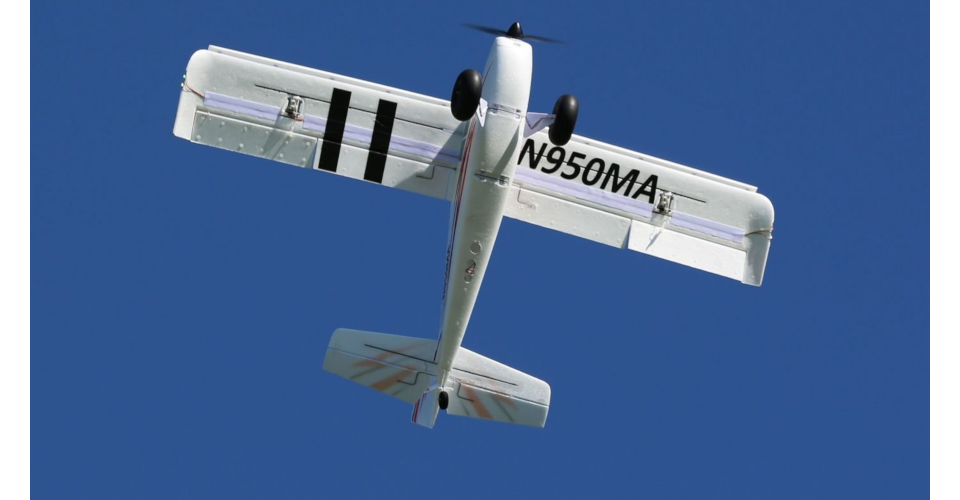

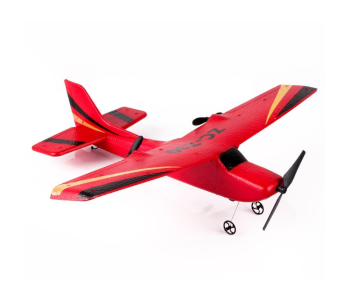 View on Amazon
View on Amazon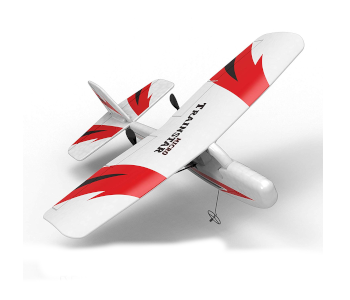 View on Amazon
View on Amazon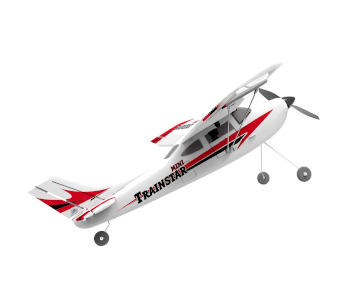 View on Amazon
View on Amazon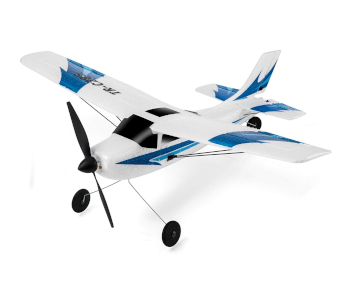 View on Amazon
View on Amazon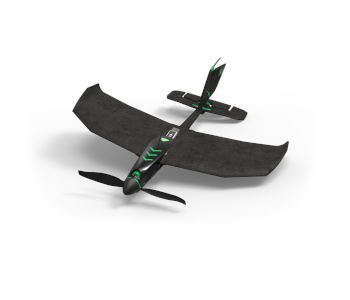 View on Amazon
View on Amazon
SmartPlane Pro. Is it posible to run two planes simultaniusly/concurently?